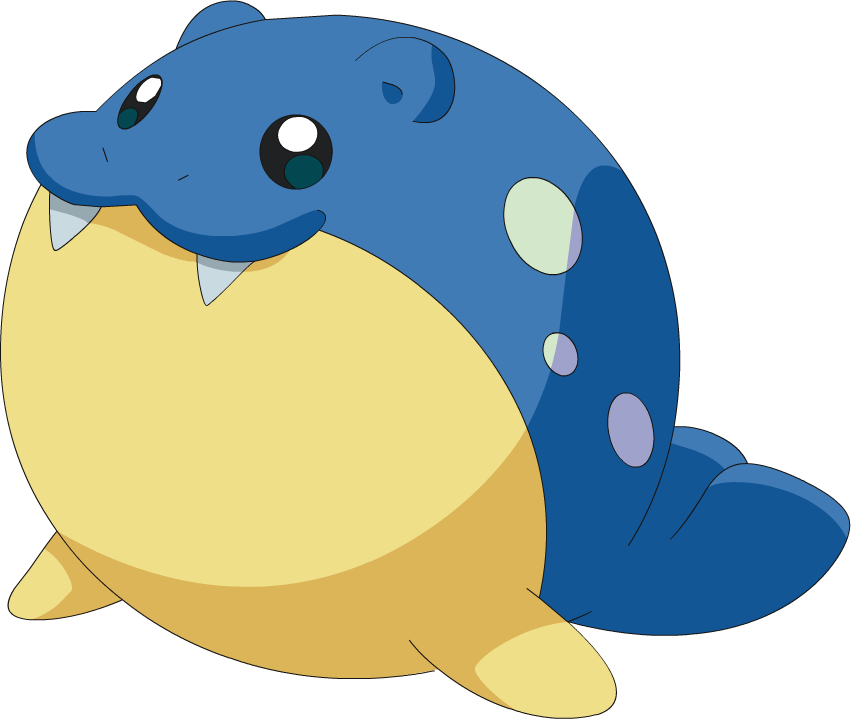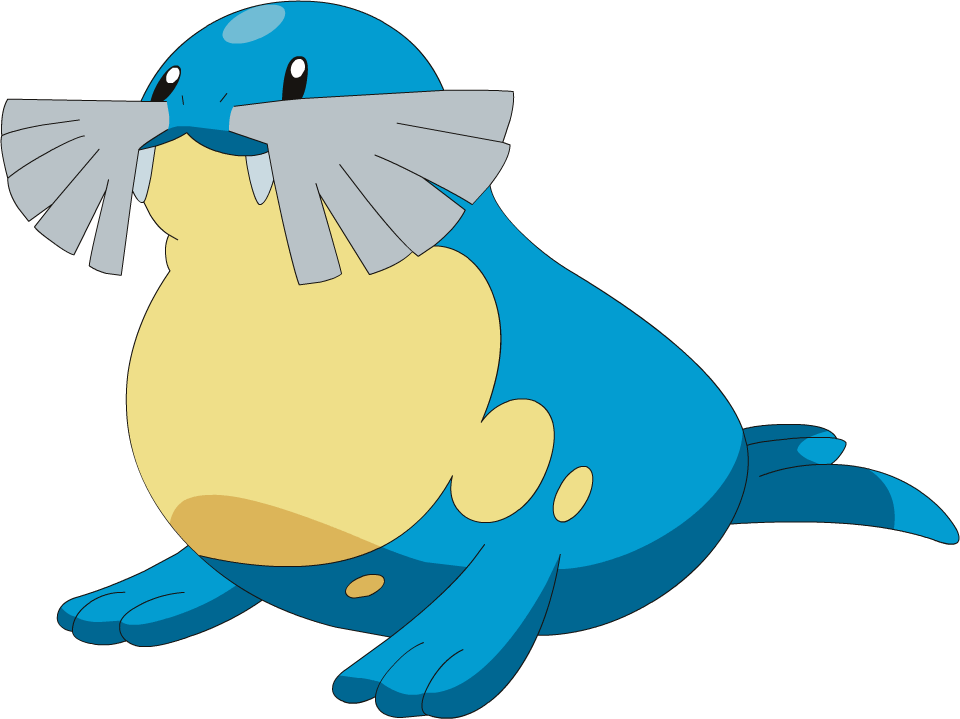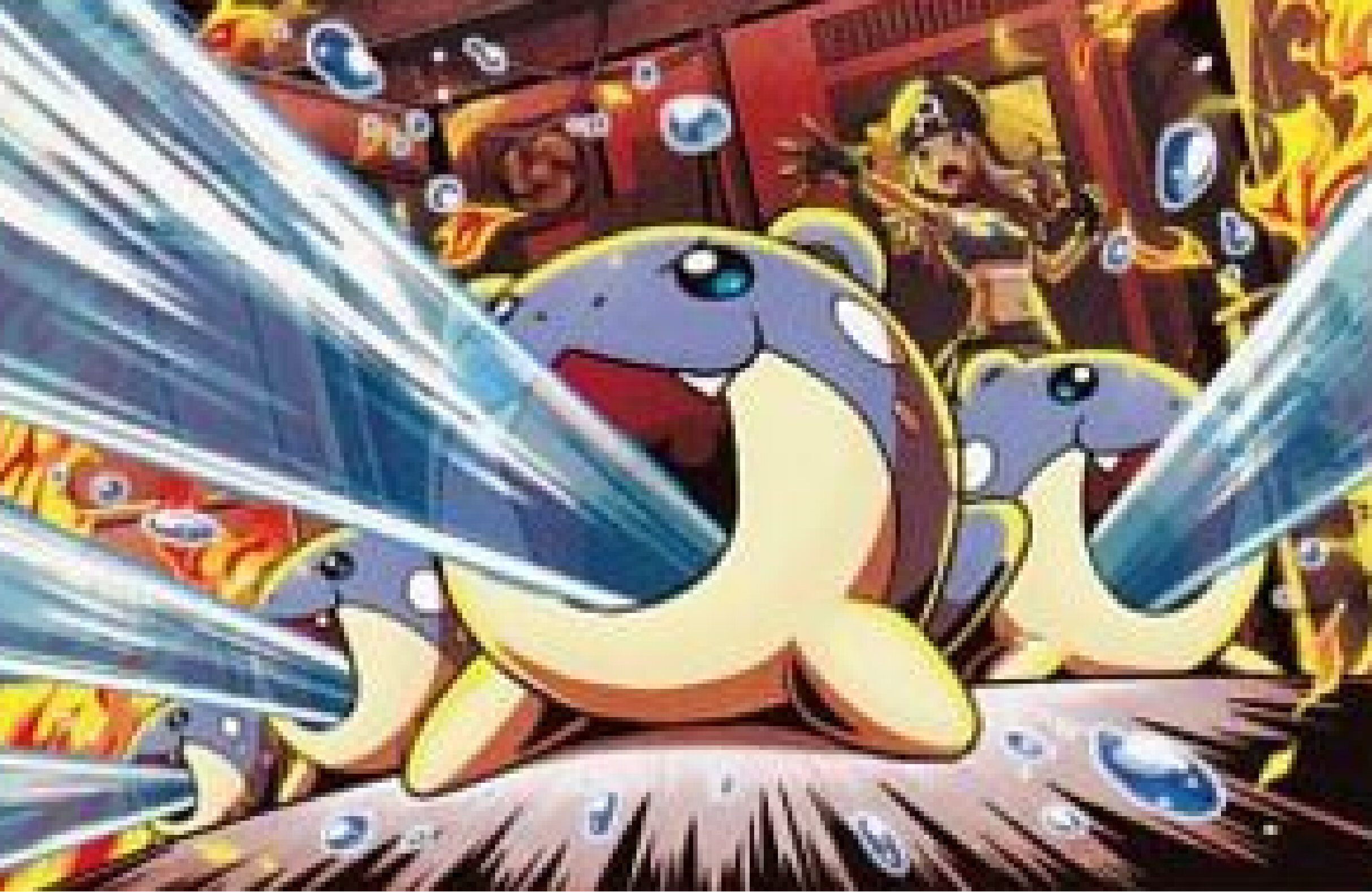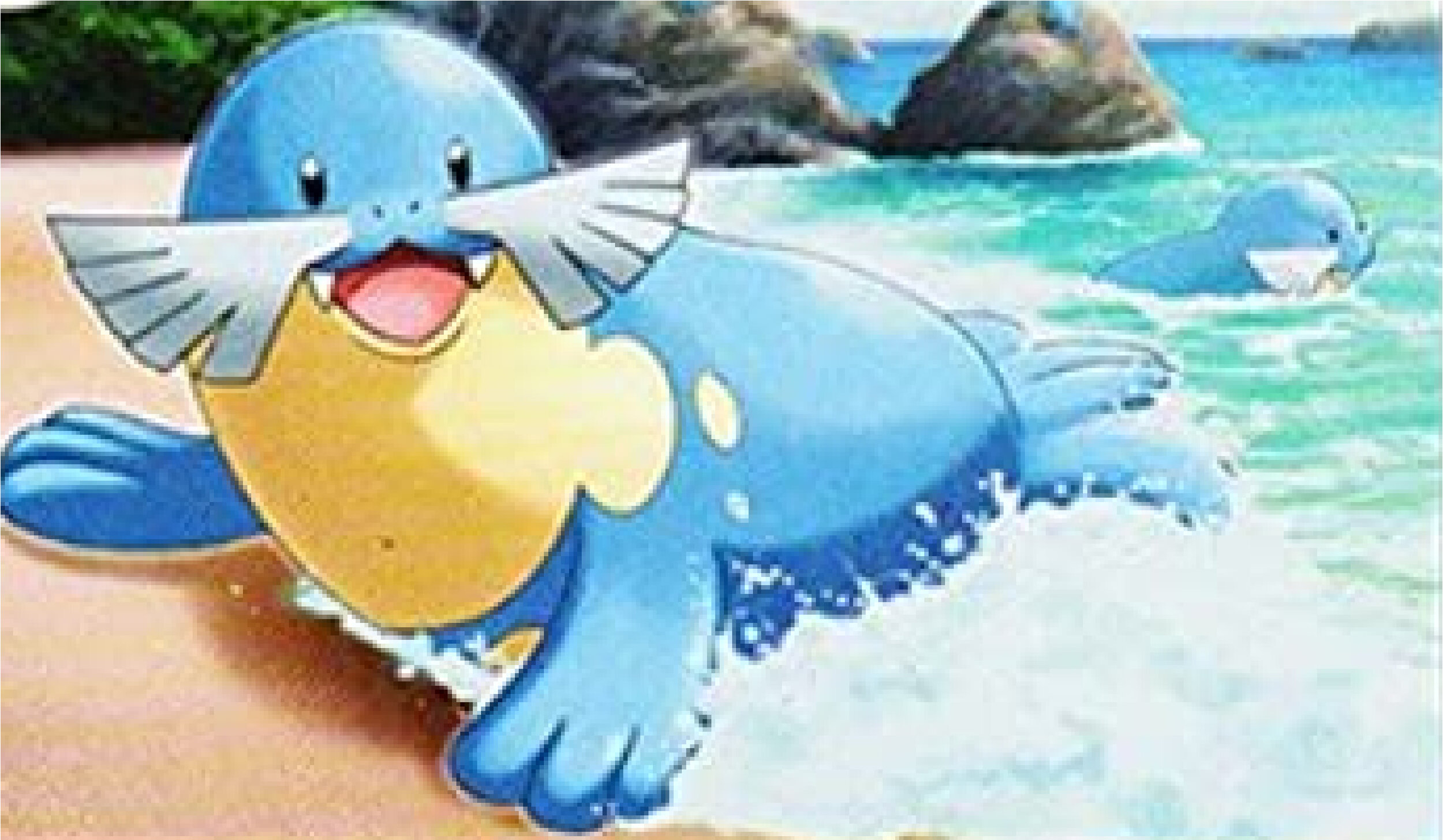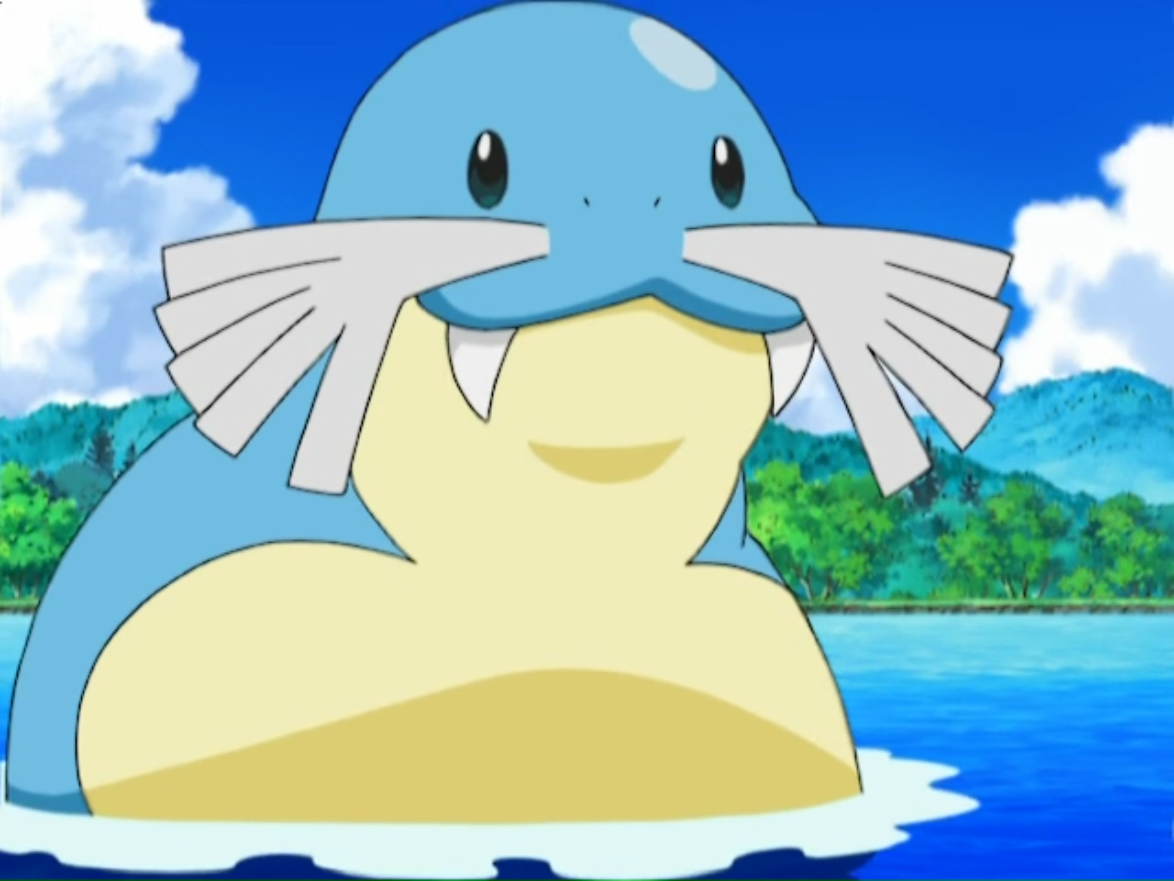Dex Dive: Spheal
Do you ever get those days, where it’s the middle of Winter, and all you want to do is curl up into a ball and roll around on the ice? No? Well, at least there’s Spheal, they understand what I’m saying.
We’re back for another Dex Dive, and this time we’re looking into the fun loving Spheal and its whole evolution line.
(Because some day the Pokedex section will become out of date, for future reference this goes only as far as Generation VIII)
Basics
Spheal: Clap Pokemon
#363
Type: Ice, Water
Height: 2’07” / 0.8m
Weight: 87.1 lbs / 39.5 kg
Sealeo: Ball Roll Pokemon
#364
Type: Ice, Water
Height: 3’07” / 1.1m
Weight: 193.1 lbs / 87.6 kg
Walrein: Ice Break Pokemon
#365
Type: Ice, Water
Height: 4’07” / 1.4m
Weight: 332.0 lbs / 150.6 kg
Pokedex Entries
Spheal’s evolution line was first introduced in Generation III with Ruby and Sapphire. Beginning with these games, one thing is made incredibly clear: this Pokemon is built to roll. With its ball-shaped body, Spheal is actually much faster when rolling than to walking.
With a preference for the cold climate, Spheal’s body needs some extra insulation to keep it warm. As immediately as its pokedex entry in Emerald they bring up its “plushy fur” that keeps it nice and toasty while its body moves across the ice. Jumping ahead all the way to Generation VIII, it comes out that under this fur is a layer of blubber, seemingly to both keep it warm and help fill out its round shape. Of course, both of these facts also make Spheal sound extra nice to cuddle.
Spheal is known as the clap Pokemon, and it is just another way in which it shows just how happy and fun it can be. When Spheals eat good food, they clap to show their excitement. In Generation V, with Black 2 and White 2, this idea is expanded upon to tell us that they start to clap anytime they get excited at all.
While Emerald tells us that Spheal dives into the sea, implying heavily that it can swim, they don’t seem to swim very well. Even as soon as the next generation of games, with Generation IV, we’re told that Spheal is poorly shaped for swimming. This is followed up on in Generation V where we’re told they “can’t swim well yet”. Again, not that they can’t swim, they just aren’t great at it. But they try.
Because of their struggle with swimming, Spheals often travel by rolling around on drifting ice floes, a much safer way for them to cross the sea than to swim the whole way.
But just because Spheal doesn’t swim well, doesn’t mean it can’t float. In Shield’s pokedex, Spheal is described as drifting with the waves to probe the sea. When these Spheal spot prey, they tell the Walrein of their herd. Being used in this kind of way, it is almost like Spheal is a surveillance buoy.
Sealeo is one of those Pokemon who unfortunately have just one primary fact about them that carries over between nearly every pokedex entry. Aside from some minor changes in wording, just about everything there is to know about Sealeo comes out of the pokedex entries from Generation III. The biggest thing that comes out of these entries is basically that when it was a Spheal, it loved to roll, and now that it is bigger it rolls other things on its nose instead.
A Sealeo’s nose is very sensitive. By spinning things on its nose it is testing it textures and odors, and generally just testing to see if it likes the thing. While this is how Sealeos examine new objects, they also just have a tendency to spin Spheals or pokeballs around just for fun.
The only other fact about Sealeos comes out of the confirmation that this evolution line lives in herds on ice floes. Their flippers are even strong enough to shatter ice, presumably helping the herd travel by breaking the ice away from larger areas to help them move. And while Spheal float with the waves to try to spot prey for the heard to hunt, Sealeo dives into the sea five times a day to sniff out the scent of prey underwater.
Walrein, on the other hand, are basically built for battle. The point that comes up most about Walrein is its tusks. These tusks are massive and have the power to break ice that weighs ten tons. Now, this is an ambiguously worded statement. If we take this to mean an iceberg that is ten tons, well, that weight is across the entire structure, and may not be representative of the point that is being shattered. But, to take it more at face value, believing it means the tusks are capable of around 20,000 lbs of force, it is absolutely insane compared with something like a human punch, which has had studies estimating somewhere around 700-800 lbs of force as an average in trained fighters. For reference, crushing a human skull would require only 520 lbs of force.
If a herd is in danger, the leading Walrein is willing to fight to the death to protect it. It has been known to fight so hard that its tusks snap off, but according to Shield’s pokedex entry, if this happens, the tusks should grow back within a year.
But Walrein isn’t just pure offensive strength. It’s body is covered in a thick layer of blubber, not only keeping it warm as it swims through freezing waters, but making its body so thick that many attacks bounce right off of it.
It is also thanks to Walrein that we get the full picture of how these herds work. According to Sword, Walrein form herds of 20-30 Pokemon, presumably all in their evolutionary line. It seems that with Spheal’s inability to swim, Sealeo can break off ice to form floes, while Walrein can destroy any icebergs that may be blocking their path.
When it comes to the herd’s hunting habits, Spheal seems to act as a kind of lookout, Sealeo is more of a scout, and Walrein is the real muscle who can take on any prey the others might find. And with all of this being the case, if a trainer sees a Spheal bobbing up and down in the water, it is probably best to just leave it alone. It might just sound the alarm and have it’s whole heard come after them.
Creative Origins
Name:
Spheal is without a doubt the most playful of the names here, deriving from a combination of “sphere” and “seal”, because it basically is just a ball shaped seal.
Sealeo gets its name from sealions but swapping out “lion” for its astrologically connotated counterpart “leo”.
And finally, Walrein is a combination of “walrus” and “reign”, because this powerful walrus is the leader of the herd, reigning over the rest.
Aesthetics:
Spheals entire evolutionary line is primarily blue. Though it is not true of all water type Pokemon, this kind of colouring is often used as a visual clue as to its type.
While the name Spheal has already been discussed as deriving in part from the animal “seal”, eared seals (like Spheal) are actually what are generally known as sealions. Spheal is also much rounder than real seals (which are round, but in a more tube-like way). This could be in part to have them look more like a buoy, or possibly from reverse engineering its shape after deciding that Sealeo enjoys rolling things on its nose.
Along similar lines, neither seals nor sealions have tusks like Spheal’s, which seem to be primarily there to help build cohesion between its evolutions.
Sealeo looks almost as though someone stretched out a Spheal to take on the more natural shape of seal or sealion. But going back to the Spheal’s having ears (and therefor probably making it a sealion), Sealeo doesn’t have ears, and is closer to a normal seal in that way.
While both seals and sealions have whiskers, they don’t appear on Spheal at all, and take on a more mustache like appearance when it comes to Sealeo.
The cream-coloured belly was that took up half of Spheal is still present and seems to be nearly the same shape as it was with Spheal, giving the impression that its belly stayed the same while the rest of it grew out.
It’s also worth noting that both Spheal and Sealeo have faces that give off incredibly playful vibes. They both have more simplistic, almost beaded eyes, and cat-like curves to their upper lips that give the impression of a constant smile. Even simply the rounder shapes to their faces, these two are meant to look fun and playful.
Contrasting much of this is Walrein. Walrein is primarily based off a walrus, as its name implies. The roundness the prior forms have is replaced by a much more muscular body shape, and even has hind legs. Its mouth loses the middle point to the curve, and its eyes are more detailed, creating a more serious kind of expression. Its tusks become long at this point and really take on a more threatening appearance at this stage in its evolution.
What was a cream coloured circle around its belly in prior forms, is replaced by two white rings around its neck as Walrein. These rings keep the circular motif of the others, but again seem to aim to take the playfulness and colour away from it.
The whiskers of Sealeo grow out into a full-blown mustache. And not only that, but the white colour covers the entire upper portion of Walrein’s head, taking on a mask-like appearance. It is possible that this is meant to call to mind a luchador mask, given Walrein’s size and ferocity.
Inspiration:
Spheal’s whole line comes out of the taxonomic superfamily of pinnipeds. Pinniped is derived from Latin and means feather foot. This superfamily is the grouping of the three families, which includes seals, sealions, and walrus. These are all animals that congregate into groups, much like their Pokemon counterparts, though in real life they don’t have their groups mix all three of their species like the Pokemon do.
Spheal’s love of rolling to move around seems to come out of the way in which seals have been known to roll when they need to move a short distance but exaggerating this fact to make it more playful.
Similarly, sealions are known for having sensitive nerve fibers in their whiskeys to help them navigate, which is exaggerated in Sealeo to have rolling things on its nose be its primary source of information on an object.
Much like how true seals are earless, and Spheal has ears where Sealeo doesn’t, Sealeo seems to take another core trait for seals. The concept of rolling things on its nose is most likely in reference to the way seals have been trained to perform in circus acts by rolling balls on their noses.
Walrus’s are known for establishing dominance through feats of strength using their tusks, which seems to come into play with how Walrein using its strength to protect its herd, and the importance of their tusks.
While a walrus’s tusks don’t grow back in the way that seems to be described in Walrein’s pokedex entries, there is some level of truth to the real animal as well. A Walrus’s tusks are constantly growing, which means they will eventually gain back what is lost, just probably not as fast as in Pokemon.

